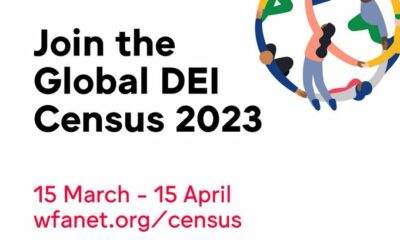WFA CEO @Stephan Lo calls on the industry to change the narrative and to stop using terms such as ‘whitelist’ and ‘blacklist’ for the biases they perpetuate.
We all know that words matter – at their best they can inspire better actions, and at their worst they can cause harm and incite violence.
In line with the recent advice we’ve issued through our Global Alliance for Responsible Media, we are encouraging all our members effective immediately to cease the use of the racially-loaded terms blacklist and whitelist when referring to the content and sites they want excluded or included in their media campaigns.
While we assume that there wasn’t any negative intent in the creation of these terms, we have to acknowledge they are wrong to use in the biases they perpetuate and the pain – conscious and unconscious – they cause.
Our request is simple:
- Change the narrative: Refer to content and sites you want included in your campaigns as Inclusion Lists, and conversely content and sites you want eliminated in your campaigns as Exclusion Lists.
- Activate your network: As marketing leaders and representatives of your organizations, please cascade this shift and politely call out the need for change when you see others not doing it.
- Embed it in your operations: Update all operating documents and especially contracts between marketers, agencies, platforms and technology partners to reflect this shift.
We need to undertake all viable actions to chase out bias and create safety for all. We’d like to acknowledge the partnership in this from GroupM, the APB and the 4As at driving this new consciousness.
Our own WFA Inclusion & Diversity task force would like to raise this as a positive opportunity to reset some of our wider approaches in this space too. Whilst brand safety technology like this is vital to stopping fake news and reducing hate speech, it can have unintended consequences in accidentally excluding minority voices or defunding diverse media.
We need to take strong stands to ensure consumer safety but find approaches to brand suitability which still support an active journalism industry. Two further steps we’d encourage leaders in this space to take are:
- Review your exclusion lists to ensure they do not contain broad and generic words which might accidentally defund positive coverage of minority communities.
- Embrace active inclusion: Look at how you can actively include diverse media titles or networks within your inclusion lists to positively reach and support these audiences.
The language we choose to use impacts our internal cultures and society more broadly, and that doesn’t stop with the ‘blacklist/whitelist’ binomial. The same considerations should be applied across the board in how we use other language which has accidental gender, age or racial implications, or even language that carries violent connotations.
Reference: http://bit.ly/2WoHpBP



